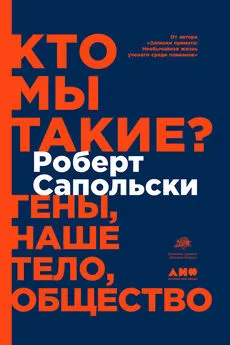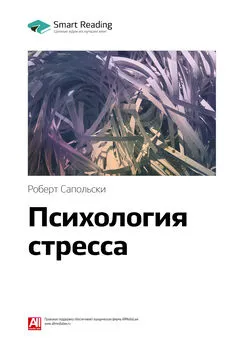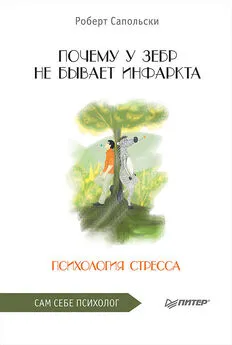Роберт Сапольски - Биология добра и зла. Как наука объясняет наши поступки
- Название:Биология добра и зла. Как наука объясняет наши поступки
- Автор:
- Жанр:
- Издательство:Альпина нон-фикшн
- Год:2019
- Город:Москва
- ISBN:978-5-0013-9051-0
- Рейтинг:
- Избранное:Добавить в избранное
-
Отзывы:
-
Ваша оценка:
Роберт Сапольски - Биология добра и зла. Как наука объясняет наши поступки краткое содержание
Биология добра и зла. Как наука объясняет наши поступки - читать онлайн бесплатно ознакомительный отрывок
Интервал:
Закладка:
610
A. Brown, The Darwin Wars: The Scientific Battle for the Soul of Man (New York: Touchstone/Simon and Schuster, 1999).
611
S. J. Gould and R. Lewontin, “The Spandrels of San Marco and the Panglossian Paradigm: A Critique of the Adaptationist Programme,” Proc Royal Soc of London B 205 (1979): 581.
612
D. Barash and J. Lipton, “How the Scientist Got His Ideas,” Chronicle of Higher Education , January 3, 2010.
613
D. Hofstede, Planet of the Apes: An Unofficial Companion (Toronto: ECW Press, 2001).
614
T. A. Ito and G. R. Urland, “Race and Gender on the Brain: Electrocortical Measures of Attention to the Race and Gender of Multiply Categorizable Individuals,” JPSP 85 (2003): 616; T. Ito and B. Bartholow, “The Neural Correlates of Race,” TICS 13 (2009): 524.
615
A. Greenwald et al., “Measuring Individual Differences in Implicit Cognition: The Implicit Association Test,” JPSP 74 (1998): 1464.
616
N. Mahajan et al., “The Evolution of Intergroup Bias: Perceptions and Attitudes in Rhesus Macaques,” JPSP 100 (2011): 387.
617
H. Tajfel, “Social Psychology of Intergroup Relations,” Ann Rev of Psych 33 (1982): 1; H. Tajfel, “Experiments in Intergroup Discrimination,” Sci Am 223 (1970): 96.
618
E. Losin et al., “Own-Gender Imitation Activates the Brain’s Reward Circuitry,” SCAN 7 (2012): 804; B. C. Müller et al., “Prosocial Consequences of Imitation,” Psych Rep 110 (2012): 891.
619
S. B. Flagel et al., “A Selective Role for Dopamine in Stimulus-Reward Learning,” Nat 469 (2011): 53–57.
620
A. S. Baron and M. R. Banaji, “The Development of Implicit Attitudes: Evidence of Race Evaluations from Ages 6, 10, and Adulthood,” Psych Sci 17 (2006): 53; F. E. Aboud, Children and Prejudice (New York: Blackwell, 1988); R. S. Bigler et al., “Social Categorization and the Formation of Intergroup Attitudes in Children,” Child Development 68 (1997): 530; L. A. Hirschfeld, “Natural Assumptions: Race, Essence and Taxonomies of Human Kinds,” Soc Res 65 (1998): 331; R. S. Bigler et al., “Developmental Intergroup Theory: Explaining and Reducing Children’s Social Stereotyping and Prejudice,” Curr Dir Psych Sci 16 (2007): 162; P. Bronson and A. Merryman, “See Baby Discriminate,” Newsweek , September 14, 2009, p. 53 – из их книги «Воспитательный шок» (Nurture Shock).
621
K. D. Kinzler et al., “The Native Language of Social Cognition,” PNAS 104 (2007); 12577; S. Sangrigoli and S. De Schonen, “Recognition of Own-Race and Other-Race Faces by Three-Month-Old Infants,” J Child Psych and Psychiatry 45 (2004): 1219.
622
S. Sangrigoli et al., “Reversibility of the Other-Race Effect in Face Recognition During Childhood,” Psych Sci 16 (2005): 440.
623
R. Bigler and L. Liben, “Developmental Intergroup Theory: Explaining and Reducing Children’s Social Stereotyping and Prejudice,” Curr Dir Psych Sci 16 (2007): 162.
624
A. J. Cuddy et al., “Stereotype Content Model Across Cultures: Towards Universal Similarities and Some Differences,” Brit J Soc Psych 48 (2009): 1; H. Bernhard et al., “Parochial Altruism in Humans,” Nat 442 (2006): 912.
625
M. Levine et al., “Self-Categorization and Bystander Non-intervention: Two Experimental Studies,” J Applied Soc Psych 32 (2002): 1452; J. M. Engelmann and E. Hermann, “Chimpanzees Trust Their Friends,” Curr Biol 26 (2016): 252.
626
M. Levine et al., “Identity and Emergency Intervention: How Social Group Membership and Inclusiveness of Group Boundaries Shape Helping Behavior,” PSPB 31 (2005): 443.
627
H. A. Hornstein et al., “Effects of Sentiment and Completion of a Helping Act on Observer Helping: A Case for Socially Mediated Zeigarnik Effects,” JPSP 17 (1971): 107.
628
L. Gaertner and C. Insko, “Intergroup Discrimination in the Minimal Group Paradigm: Categorization, Reciprocation, or Fear?” JPSP 79 (2000): 77; T. Wildschut et al., “Intragroup Social Influence and Intergroup Competition,” JPSP 82 (2002): 975; C. A. Insko et al., “Interindividual-Intergroup Discontinuity as a Function of Trust and Categorization: The Paradox of Expected Cooperation,” JPSP 88 (2005): 365.
629
M. Cikara et al., “Us Versus Them: Social Identity Shapes Neural Responses to Intergroup Competition and Harm,” Psych Sci 22 (2011): 306; E. R. de Bruijn et al., “When Errors Are Rewarding,” J Nsci 29 (2009): 12183; J. J. Van Bavel et al., “Modulation of the Fusiform Face Area Following Minimal Exposure to Motivationally Relevant Faces: Evidence of In-group Enhancement (Not Out-group Disregard),” J Cog Nsci 223 (2011): 3343. К сноске: M. Cikar et al., “Their Pain Gives Us Pleasure: How Intergroup Dynamics Shape Empathic Failures and Counter-empathic Responses,” JESP 55 (2014) 110.
630
T. Singer et al., “Empathic Neural Responses Are Modulated by the Perceived Fairness of Others,” Nat 439 (2006): 466; H. Takahashi et al., “When Your Gain Is My Pain and Your Pain Is My Gain: Neural Correlates of Envy and Schadenfreude,” Sci 323 (2009): 937.
631
G. Hertel and N. L. Kerr, “Priming In-group Favoritism: The Impact of Normative Scripts in the Minimal Group Paradigm,” JESP 37 (2001): 316.
632
J. N. Gutsell and M. Inzlicht, “Intergroup Differences in the Sharing of Emotive States: Neural Evidence of an Empathy Gap,” SCAN 7 (2012): 596; J. Y. Chiao et al., “Cultural Specificity in Amygdala Response to Fear Faces,” J Cog Nsci 20 (2008): 2167.
633
P. K. Piff et al., “Me Against We: In-group Transgression, Collective Shame, and In-group-Directed Hostility,” Cog & Emotion 26 (2012): 634.
634
W. Barrett, “Thug Life: The Shocking Secret History of Harold Giuliani, the Mayor’s Ex-Convict Dad,” Village Voice , 5 July, 2000; D. Strober and G. Strober, Giuliani: Flawed or Flawless? (New York: Wiley, 2007).
635
К сноске: J. A. Lukas, “Judge Hoffman Is Taunted at Trial of the Chicago 7 After Silencing Defense Counsel,” New York Times , February 6, 1970.
636
S. Svonkin, Jews Against Prejudice: American Jews and the Fight for Civil Liberties (New York: Columbia University Press, 1997). К сноске: A. Zahr, “I Refuse to Condemn,” Civil Arab , January 9, 2015, civilarab.com/i-refuse-to-condemn/.
637
D. A. Stanley et al., “Implicit Race Attitudes Predict Trustworthiness Judgments and Economic Trust Decisions,” PNAS 108 (2011): 7710; Y. Dunham, “An Angry = Outgroup Effect,” JESP 47 (2011): 668; D. Maner et al., “Functional Projection: How Fundamental Social Motives Can Bias Interpersonal Perception,” JPSP 88 (2005): 63; K. Hugenberg and G. Bodenhausen, “Facing Prejudice: Implicit Prejudice and the Perception of Facial Threat,” Psych Sci 14 (2003): 640; A. Rattan et al., “Race and the Fragility of the Legal Distinction Between Juveniles and Adults,” PLoS ONE 7 (2012): e36680; Y. J. Xiao and J. J. Van Bavel, “See Your Friends Close and Your Enemies Closer: Social Identity and Identity Threat Shape the Representation of Physical Distance,” PSPB 38 (2012): 959; B. Reiek et al., “Intergroup Threat and Outgroup Attitudes: A Meta-analytic Review,” PSPR 10 (2006): 336; H. A. Korn, et al., “Neurolaw: Differential Brain Activity for Black and White Faces Predicts Damage Awards in Hypothetical Employment Discrimination Cases,” Soc Nsci 7 (2012): 398. Активация островковой доли при взаимодействии с внешней группой в игре: J. Rilling et al., “Social Cognitive Neural Networks During In-group and Out-group Interactions,” NeuroImage 41 (2008): 1447.
638
P. Rozin et al., “From Oral to Moral,” Science 323 (2009): 1179.
639
G. Hodson and K. Costello, “Interpersonal Disgust, Ideological Orientations, and Dehumanization as Predictors of Intergroup Attitudes,” Psych Sci 18 (2007): 691.
640
G. Hodson et al., “A Joke Is Just a Joke (Except When It Isn’t): Cavalier Humor Beliefs Facilitate the Expression of Group Dominance Motives,” JPSP 99 (2010): 460.
641
D. Berreby, Us and Them: The Science of Identity (Chicago: University of Chicago Press, 2008).
642
Leyens et al., “The Emotional Side of Prejudice: The Attribution of Secondary Emotions to Ingroups and Outgroups,” PSPR 4 (2000): 186; K. Wailoo, Pain: A Political History (Baltimore: Johns Hopkins University Press, 2014).
643
J. T. Jost and O. Hunyad, “Antecedents and Consequences of System-Justifying Ideologies,” Curr Dir Psych Sci 14 (2005): 260; G. E. Newman and P. Bloom, “Physical Contact Influences How Much People Pay at Celebrity Auctions,” PNAS 111 (2013): 3705.
644
J. Greenberg et al., “Evidence for Terror Management II: The Effects of Mortality Salience on Reactions to Those Who Threaten or Bolster the Cultural Worldview,” JPSP 58 (1990): 308.
645
J. Haidt, “The Emotional Dog and Its Rational Tail: A Social Intuitionist Approach to Moral Judgment,” Psych Rev 108 (2001): 814; J. Haidt, The Righteous Mind: Why Good People Are Divided by Politics and Religion (New York: Pantheon Books, 2012).
646
Berreby, Us and Them .
647
W. Cunningham et al., “Implicit and Explicit Ethnocentrism: Revisiting the Ideologies of Prejudice,” PSPB 30 (2004): 1332.
648
К сноске: M. J. Wood et al., “Dead and Alive: Beliefs in Contradictory Conspiracy Theories,” Social Psych and Personality Sci 3 (2012): 767.
649
C. Zogmaister et al., “The Impact of Loyalty and Equality on Implicit Ingroup Favoritism,” Group Processes & Intergroup Relations 11 (2008): 493.
650
C. D. Navarrete et al., “Race Bias Tracks Conception Risk Across the Menstrual Cycle,” Psych Sci 20 (2009): 661. C. Navarrete et al., “Fertility and Race Perception Predict Voter Preference for Barack Obama,” EHB 31 (2010): 391.
651
G. E. Newman and P. Bloom, “Physical Contact Influences How Much People Pay at Celebrity Auctions,” PNAS 111 (2013): 3705; R. Sapolsky, “Magical Thinking and the Stain of Madoff’s Sweater,” Wall Street Journal , July 12, 2014.
Читать дальшеИнтервал:
Закладка:
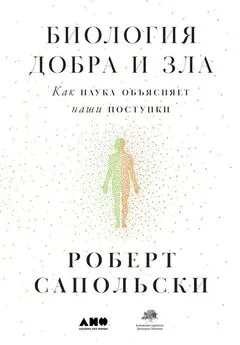
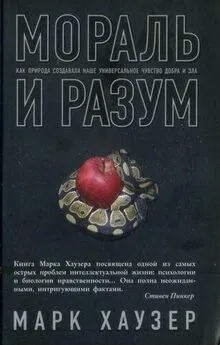
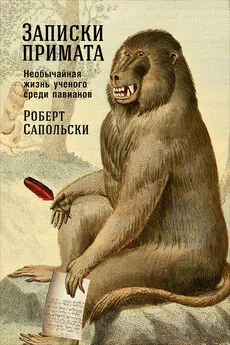


![Роберт Сапольски - Игры тестостерона и другие вопросы биологии поведения [litres]](/books/1074102/robert-sapolski-igry-testosterona-i-drugie-vopros.webp)
